Spanish for Heritage Speakers 1 Honors will develop the language and literacy skills of heritage speakers. Students in this course come from Spanish-speaking family backgrounds. They speak and understand Spanish in the home, and they demonstrate some skills in reading and writing Spanish.
The course will build upon the deep knowledge that heritage speakers of Spanish bring to the language classroom. With a focus on the formal registers of Spanish, this course will advance a student’s proficiency in Spanish for multiple contexts–academic, professional, and personal. Special attention will be given to building vocabulary for specific contexts, using advanced grammar, strengthening formal composition skills, and deepening academic reading ability. In this course, students will increase their knowledge of a variety of topics including but not limited to topics such as identity, communities, world challenges, and literature from the Spanish-speaking world.
Taught exclusively in Spanish, this course is designed for heritage speakers only.
Upon successful completion of this course and the course final exam, students are recommended to enroll in further Spanish courses, such as Spanish for Heritage Speakers 2 – Honors.
*Class receives honors weighting in SI weighted GPA and UC/CSU GPA calculations
The major difference between this honors course and the regular sophomore course is in the number of books that are read and their inherent difficulty, in the mode of instruction in the classroom, in the student initiative required, and in the number of writing assignments (generally 2-3 additional essays per year) along with their increasing and various difficulty.
Class receives honors weighting in SI weighted GPA
English 200 continues the course of study begun in the freshman year. Skills learned the previous year are refined, expanded, and enhanced. Basic grammar is reviewed and new material introduced throughout the year. The lower division writing sequence continues with a review of paragraph writing, which leads into the year’s emphasis on descriptive, narrative, and expository essay writing. Students will write approximately 10-12 papers in a variety of rhetorical modes. The writing becomes not only more formal, but increased in length as well with students writing multi-paragraph expository essays by the end of the first quarter. The reading of literature includes all the major genres: novel, drama, poetry, short story, and essay; however, the study of literature shifts from an organization by form to an organization by themes that reveal an insight into the human condition.
Latin 2 continues the progress of first-year Latin. Students will read and write more sophisticated Latin, incorporating passive voice, various types of clauses, participles, infinitives and the subjunctive mood (mode), as they begin to transition to “real Latin,” authentic primary sources from the Roman era.
In Latin 2H, the more advanced students will more quickly acquire new knowledge of Latin grammar and sentence structures to enable them to read more sophisticated works of prose and poetry. Students continue to learn about various aspects of Roman culture and history using the Cambridge Latin Course Unit 3.
*Class receives honors weighting in SI weighted GPA
Mandarin 2 is a two-semester course that continues the study and development of Mandarin. This course will have combination of acquiring elementary to low intermediate level of Mandarin language use along with Chinese culture information. Students will continue developing skills in listening, speaking, reading, and writing, and expanding knowledge of grammatical structures. Instruction in written Chinese will be a combination of simplified and traditional characters. The transcription of Mandarin sounds will be in Hanyu Pinyin.
Mandarin 2H is an accelerated course designed to challenge the student who, during his/her first year, has actively participated in class, mastered the grammar and vocabulary presented in level one and/or demonstrated the ability to advance more rapidly than the average college preparatory student. The teacher will aid students in acquiring the following skills: increased oral proficiency on a variety of topics, an expanded vocabulary, the ability to read selections appropriate to low intermediate level students and increased ability to write essays. The course materials are designed to stimulate conversation and to perfect that skill, striving to imitate the native speaker’s pronunciation, accent, and rhythm, as the student’s abilities increase. Students will also become more informed about some of the contemporary problems and difficulties affecting Chinese communities. Students will further develop their ability to express themselves in spoken and written Mandarin Chinese.
*Class receives honors weighting in SI weighted GPA
Spanish 2 is a language course designed for students who have successfully completed their first year of Spanish. It is a two-semester course which aims to improve the student’s ability to speak, read, and write in Spanish, to systematically review grammar previously studied, and to master new concepts in Spanish, and to enhance the student’s knowledge of the cultural diversity of the Spanish-speaking world. The emphasis on improvement of oral skills will be considerable, and the student will be encouraged to speak in Spanish on a variety of topics and in a number of situations ranging from question and answer to oral presentations and/or situations.
Spanish 2H is an accelerated course designed to challenge the student who, during his/her first year, has actively participated in class, mastered the grammar and vocabulary presented in level one and/or demonstrated the ability to advance more rapidly than the average college preparatory student. The teacher will aid students in acquiring the following skills: increased oral proficiency on a variety of topics, an expanded vocabulary, the ability to read selections appropriate to intermediate level students and increased ability to write essays. The course materials are designed to stimulate conversation and to perfect that skill, striving to imitate the native speaker’s pronunciation, accent, and rhythm, as the student’s abilities increase. Students will also become more informed about some of the contemporary problems and difficulties affecting Hispanic communities. Students will further develop their ability to express themselves in spoken and written Spanish.
*Class receives honors weighting in SI weighted GPA
The course reviews the basic concepts, terminology, and notation involved in geometry, and is designed for the student who successfully completed Algebra 1 as a freshman, though any student may apply. Both abstract and practical aspects are covered. Conditional statements, conjectures, theorems, and written justifications are systematically brought into the course, along with the subjects to which they pertain, in the context of problem solving as well as in the context of the preparation of formal proofs. Students construct an understanding by spending some of their class time working in collaborative learning groups. Review of algebraic and geometric concepts is employed throughout the course. In this way, algebra skills are maintained and the students are better prepared to enter into the geometric aspects of advanced algebra, math analysis, precalculus, and calculus courses. A Texas Instruments TI-83 or TI-84 series graphing calculator is required.

